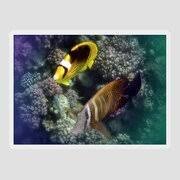Dragons in Chinese New Year Festivals: Symbolism, Traditions, and Cultural Significance
The Role of Dragons in Chinese New Year Celebrations
The dragon is one of the most revered symbols in Chinese culture, and its presence during Tết Nguyên Đán (Lunar New Year) celebrations embodies power, prosperity, and good fortune. Throughout China and in many overseas Chinese communities, dragons take center stage in parades, dances, fireworks displays, and temple offerings. Their image appears on decorations, clothing, and festive foods, reinforcing their role as mythical guardians and bringers of prosperity for the coming year.
This article explores the deep-rooted connection between dragons and Chinese New Year celebrations, examining their historical significance, their role in festival traditions, and how they continue to be a symbol of national pride and cultural identity.
Historical Significance of Dragons in Lunar New Year Traditions
The Mythological Origins of the Dragon’s Role
Chinese mythology describes dragons as divine creatures that control the elements, particularly water, wind, and rain. Unlike Western dragons, which are often depicted as fearsome beasts, Chinese dragons are seen as benevolent protectors.
One legend states that during the earliest Lunar New Year celebrations, people would pray to dragons for good harvests, favorable weather, and protection from evil spirits. These beliefs shaped many of the customs associated with the Spring Festival (春节) and helped establish the tradition of honoring dragons during the New Year.
The Connection Between Dragons and the Emperor
In ancient China, the emperor was considered the “Son of the Dragon”, a ruler chosen by the heavens to govern the land. The association between dragons and imperial power meant that celebrating the New Year with dragon-themed performances was not only a way to bring good fortune to the people but also to reinforce the idea of the emperor’s divine legitimacy.
During the Ming (1368–1644) and Qing (1644–1912) dynasties, imperial processions featured elaborate dragon displays, symbolizing national unity and strength. Today, these traditions live on in the grand dragon dances performed throughout China during the Lunar New Year.
The Dragon Dance: The Most Iconic Lunar New Year Tradition
One of the most anticipated events during Tết Nguyên Đán is the Dragon Dance (舞龙). This dynamic performance involves a team of dancers manipulating a long, serpentine dragon puppet made of fabric, bamboo, and colorful decorations.
Symbolic Meaning of the Dragon Dance
The dance represents the awakening of the dragon, bringing luck, rain for crops, and prosperity for the new year. The liveliness of the dragon’s movements is believed to scare away evil spirits and misfortune, while the coordinated teamwork of the performers symbolizes harmony and collective strength.
Key Features of the Dragon Dance
- Length and Design: Some dragon puppets used in performances are over 30 meters long, requiring dozens of performers to carry and manipulate them.
- Movement and Rhythm: The dance mimics the fluid movements of a dragon in the sky or sea, incorporating leaps, twists, and undulations.
- Accompanying Music: Drums, cymbals, and gongs set a rhythmic pace, enhancing the energy of the performance.
- The Pearl of Wisdom: A dancer leads the dragon with a large orb (representing a pearl), symbolizing the pursuit of knowledge and enlightenment.
Regional Variations of the Dragon Dance
- Northern China: Performances often use heavier dragon puppets with intricate golden scales and imperial motifs.
- Southern China: The dance is more lively and acrobatic, with brightly colored dragons adorned with elaborate patterns.
- Hong Kong & Macau: Fire dragon dances involve dragons made of incense sticks, creating a mesmerizing fiery effect at night.
Dragon-Themed Decorations and Symbolism During Lunar New Year
Dragons are a dominant visual motif in Lunar New Year decorations, appearing on red banners, lanterns, door couplets, and paper cuttings. Each representation of the dragon holds a special meaning related to luck, success, and protection.
Common Dragon Decorations and Their Meanings
- Dragon and Phoenix Imagery: Often seen together, the dragon represents masculine power (yang), while the phoenix symbolizes feminine grace (yin), bringing balance and harmony to homes.
- Dragon Lanterns: These are hung outside homes and businesses, illuminating pathways and inviting prosperity into the household.
- Golden Dragon Symbols: Gold is the color of wealth and good fortune, making golden dragons a popular motif in New Year gifts, calligraphy, and jewelry.
- Dragon Door Couplets: Pairs of red banners inscribed with blessings and dragon symbols are placed at entrances to ward off misfortune.
Dragons in Traditional Lunar New Year Foods
Food plays a vital role in Chinese New Year, and many festive dishes incorporate dragon symbolism. Certain foods are prepared to honor the dragon’s presence, ensuring prosperity and good luck in the coming year.
Notable Dragon-Themed Dishes
- Dragon Beard Candy (龙须糖): This fine, silky sugar confection resembles a dragon’s beard and symbolizes longevity and wisdom.
- Dragon Fish (龙鱼): Whole fish, especially carp, is a must-have dish because the word for fish (鱼, yú) sounds like “abundance”, and fish are linked to water dragons.
- Dragon Dumplings (龙饺子): Some dumplings are shaped like coiled dragons, symbolizing wealth and prosperity.
- Dragon Fruit Offerings: The bright red dragon fruit is commonly placed on New Year altars, signifying good fortune and protection.
Temple Ceremonies: Honoring the Dragon During New Year Prayers
Many people visit Buddhist and Taoist temples during Lunar New Year to pray for blessings, and dragons are often a central focus of these religious rituals.
Dragon Altars and Offerings
- Worshippers light incense sticks and place fruit and flowers at altars featuring golden dragon statues.
- Monks recite chants and prayers to invoke the dragon’s divine protection and wisdom.
- Families write their wishes on red paper and attach them to dragon sculptures, hoping their prayers will be answered.
The Dragon and the God of Wealth (财神)
During Lunar New Year, the God of Wealth is often depicted riding a golden dragon, symbolizing financial success in the year ahead. Many businesses and households place paintings or statues of this imagery in their shops and homes to attract prosperity.
Modern Adaptations: How Dragon Traditions Evolve in Contemporary Celebrations
While traditional dragon-related customs remain strong, modern innovations have brought new ways to celebrate the dragon’s role in Chinese New Year.
LED Dragon Dances
- Digital light-up dragons now appear in New Year parades, creating a mesmerizing display of glowing scales and neon colors.
- High-tech robotics allow dragons to move with even greater fluidity and realism.
Virtual and Digital Dragon Greetings
- People now send animated dragon-themed e-cards to wish each other luck.
- Social media platforms launch custom dragon stickers and filters for Lunar New Year.
Dragon-Inspired Fashion
- Luxury brands release limited-edition dragon-themed clothing and accessories to mark the occasion.
- Red and gold dragon embroidery appears on traditional qipaos and Tang suits worn during New Year celebrations.
Conclusion
Dragons are an essential and revered part of Chinese New Year traditions, symbolizing strength, prosperity, and protection. From the energetic dragon dances to the intricate decorations, festive foods, and temple ceremonies, these mythical creatures continue to play a pivotal role in shaping the celebrations of Tết Nguyên Đán.
As Lunar New Year traditions evolve, the spirit of the dragon remains a powerful guardian of fortune and cultural heritage, ensuring that each new year begins with hope, joy, and abundance.



